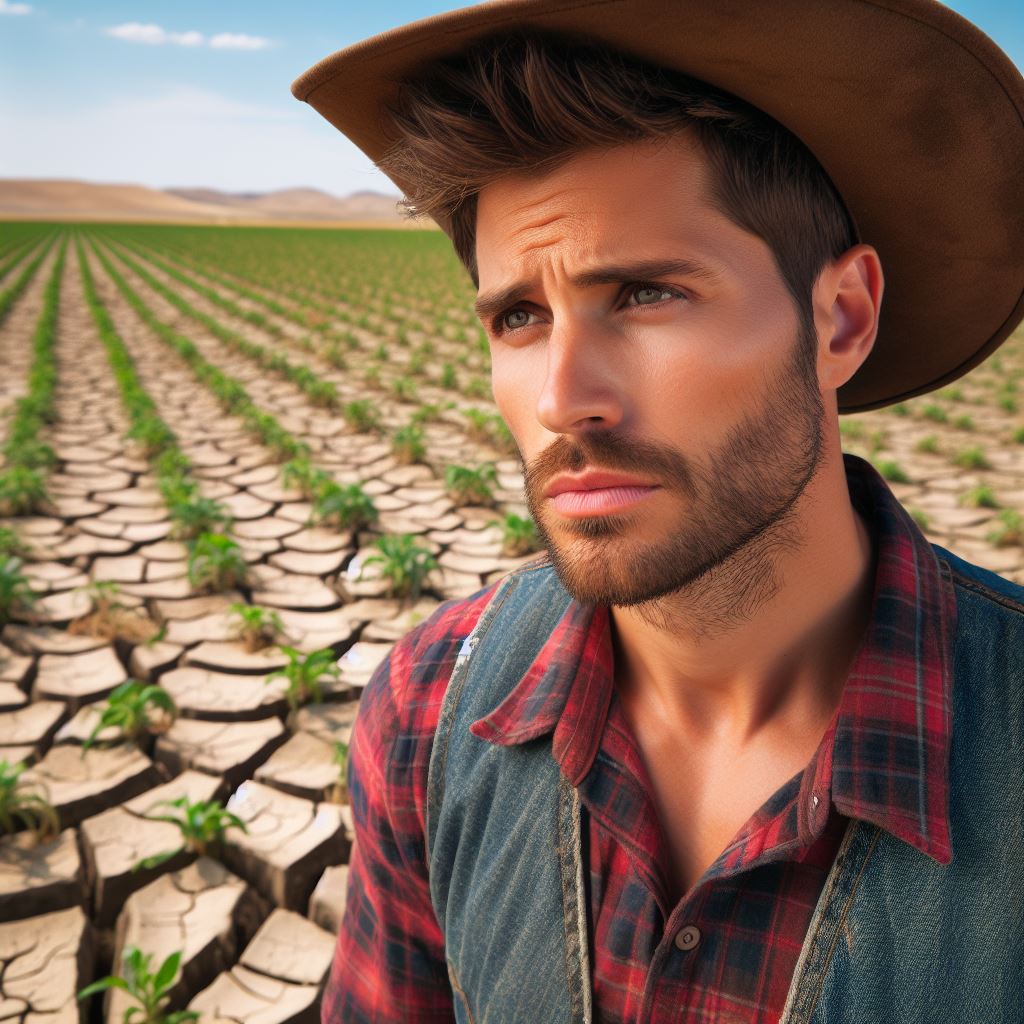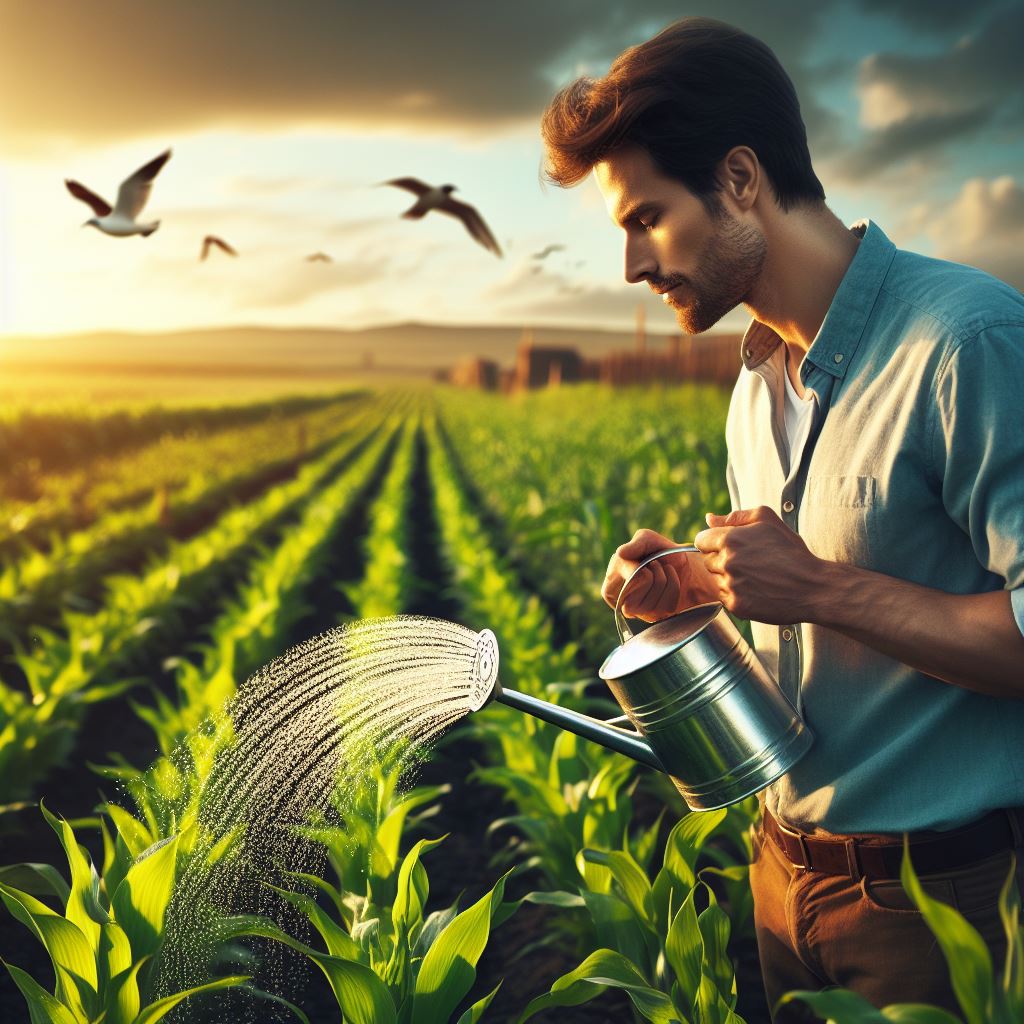Introduction
Farm lands are not only spaces for cultivation but also havens for various wildlife species to thrive.
The coexistence of agriculture and wildlife is essential for a sustainable and balanced ecosystem.
Wildlife plays a crucial role in pollination, pest control, and nutrient cycling, benefiting farm lands.
Preserving wildlife habitats on farm lands can enhance crop yields, as many species act as natural predators.
Without adequate protection, wildlife populations can decline, leading to imbalances in the ecosystem.
By implementing measures such as creating buffer zones or wildlife-friendly farming practices, farmers can ensure wildlife protection.
These measures include preserving natural vegetation, providing water sources, and avoiding the use of harmful pesticides.
Farmers can also create wildlife corridors or set aside dedicated areas for wildlife habitat.
Protected farm lands not only benefit wildlife but also promote ecotourism and provide educational opportunities.
Conservation organizations and government agencies should work together to raise awareness and provide support to farmers.
Therefore, wildlife protection on farm lands is essential for maintaining a healthy ecosystem and sustainable agriculture.
The impact of wildlife on farm lands
Wildlife plays a significant role in the functioning of farm lands, having both positive and negative impacts on agricultural activities.
Positive effects
- One of the key advantages of wildlife presence on farm lands is natural pest control.
- Many wildlife species feed on pests, such as insects and rodents, reducing the need for chemical pesticides.
- This natural pest control method helps maintain a healthy balance in the farm ecosystem.
- Additionally, wildlife contributes to pollination, which is essential for crop reproduction.
- Bees, butterflies, and other animals visit flowers, spreading pollen and enabling fertilization.
- This improves the yield and quality of agricultural products on the farm.
Negative effects
- Despite their positive contributions, wildlife can also have negative implications for farm lands.
- Crop damage is a significant concern when it comes to wildlife presence.
- Herbivorous animals such as deer, rabbits, and squirrels can cause substantial losses to crops.
- They may feed on leaves, stems, fruits, or even uproot entire plants, leading to reduced yields.
- Livestock predation is another negative impact of wildlife on farm lands.
- Predatory animals like wolves, foxes, or birds of prey can target and attack livestock, causing economic losses.
- Farmers need to implement measures to protect their livestock from wildlife predators.
Most importantly, wildlife presence on farm lands has both positive and negative consequences.
Natural pest control and pollination are two advantages of wildlife, improving the overall ecosystem.
However, the potential for crop damage and livestock predation necessitates strategies for coexistence between farmers and wildlife.
Transform Your Agribusiness
Unlock your farm's potential with expert advice tailored to your needs. Get actionable steps that drive real results.
Get StartedImplementing safeguards, such as fencing, scare tactics, or working with conservation organizations, can mitigate these negative impacts.
Finding a balance that allows wildlife protection while minimizing agricultural losses is crucial for sustainable farming practices.
Read: 2024 Farm Bill: Key Changes for US Farmers
Challenges faced by wildlife on farm lands
Habitat loss
- Intensive farming practices lead to the destruction and fragmentation of wildlife habitats.
- The conversion of natural habitats into agricultural land eliminates crucial food and shelter sources.
- Wildlife species, such as birds, insects, and mammals, lose their nesting sites and foraging areas.
- The expansion of farm lands often results in the removal of hedgerows, trees, and other vegetation.
- Lack of suitable habitats forces wildlife to seek refuge in small, isolated patches, increasing competition and vulnerability.
Pesticides and chemicals
- The use of pesticides, herbicides, and fertilizers on farm lands poses a significant threat to wildlife.
- Pesticides can directly harm wildlife by poisoning their food sources and water bodies.
- Birds, mammals, and insects can suffer from acute or chronic pesticide poisoning, leading to population declines.
- Chemicals can also accumulate in the ecosystem, causing long-term impacts on the food chain.
- Wildlife species that rely on farm lands for food and shelter are particularly vulnerable to pesticide exposure.
Human disturbances
- Farm activities, such as plowing, harvesting, and livestock grazing, disturb wildlife and their habitats.
- Constant machinery noise and human presence can stress and displace sensitive species.
- Trampling of nests, destruction of burrows, and disturbance during breeding seasons can disrupt wildlife populations.
- Farm roads and infrastructure fragment habitats, making it difficult for wildlife to move and find resources.
- Human-wildlife conflicts may arise when animals raid crops, leading to negative interactions between farmers and wildlife.
Overall, wildlife face several challenges on farm lands, primarily due to habitat loss, pesticide use, and human disturbances.
These challenges have detrimental effects on biodiversity and ecosystem functions.
To address these issues, proactive measures need to be taken to conserve and protect wildlife in agricultural landscapes.
Some potential solutions include:
- Implementing sustainable farming practices that minimize habitat destruction and promote biodiversity.
- Preserving and restoring native vegetation strips, hedgerows, and old-growth trees within farm landscapes.
- Reducing the use of pesticides and transitioning to organic farming methods.
- Implementing integrated pest management strategies to control pests without harming wildlife.
- Educating farmers and the local community about the importance of wildlife conservation and promoting coexistence.
- Designing wildlife-friendly farming practices, such as providing nesting boxes and insect-friendly habitats.
- Creating wildlife corridors and connecting fragmented habitats to enable the movement of wildlife.
- Collaborating with conservation organizations, researchers, and policymakers to develop wildlife-friendly farming policies.
By addressing these challenges and implementing proactive conservation measures, we can create a sustainable balance between agriculture and wildlife protection.
Farm lands can become crucial habitats for a diverse range of species, contributing to the overall health and resilience of ecosystems.
Read: 2024 Crop Insurance Policies: What’s New?

Strategies to protect wildlife on farm lands
Protecting wildlife on farmlands is not only essential for maintaining biodiversity but also for promoting sustainable agriculture.
Here are several strategies farmers can implement to achieve this:
Conservation Planning
- Identifying Crucial Habitats: Farmers can collaborate with conservationists to identify key habitats on their land, such as wetlands, woodlands, or grasslands. By recognizing these areas, farmers can take steps to protect them from development or agricultural practices that could harm wildlife.
- Establishing Wildlife Corridors: Creating wildlife corridors allows animals to move freely between habitats, increasing genetic diversity and resilience. Farmers can designate strips of land as wildlife corridors, planting native vegetation to provide food and shelter for animals.
Promoting Sustainable Farming Practices
- Reducing Use of Chemicals and Pesticides: Farmers can adopt organic farming methods and minimize the use of synthetic chemicals and pesticides. This helps prevent pollution of waterways and soil, which can harm wildlife populations.
- Implementing Integrated Pest Management (IPM): IPM involves using a combination of biological, cultural, and mechanical methods to manage pests. By reducing reliance on chemical pesticides and encouraging natural predators, farmers can maintain pest populations at manageable levels without harming wildlife.
Encouraging Buffer Zones and Alternative Habitats
- Buffer Zones: Farmers can establish vegetative buffer zones along water bodies, field edges, and other sensitive areas. These buffers help filter pollutants, reduce erosion, and provide habitat for wildlife.
- Creating Alternative Habitats: Setting aside areas of farmland for native plants, hedgerows, or wildflower meadows can create additional habitat for wildlife. These habitats can support pollinators, birds, and other beneficial species.
By implementing these strategies, farmers can enhance the ecological value of their farmlands while also improving the resilience and productivity of their operations.
Additionally, protecting wildlife on farmlands can provide numerous benefits for farmers, including:
- Pest Control: Many species of wildlife, such as birds, bats, and insects, provide natural pest control services by feeding on crop pests. By preserving habitats for these species, farmers can reduce the need for chemical pesticides and save on input costs.
- Soil Health: Wildlife plays a crucial role in maintaining soil health and fertility. For example, burrowing animals like earthworms and ground-dwelling insects help aerate the soil and break down organic matter, improving its structure and nutrient content.
- Pollination: Bees, butterflies, and other pollinators are essential for the reproduction of many crops. By providing habitat and forage resources for pollinators, farmers can enhance pollination rates and improve crop yields.
- Biodiversity: Farmlands that support diverse plant and animal species are more resilient to environmental changes and are better able to adapt to challenges such as pests, diseases, and climate variability.
In essence, protecting wildlife on farmlands is crucial for promoting biodiversity, supporting ecosystem services, and ensuring the long-term sustainability of agriculture.
By implementing conservation measures and adopting sustainable farming practices, farmers can create healthier, more resilient landscapes that benefit both wildlife and agriculture.
Read: American Agri-Exports: Navigating New Policies
Gain More Insights: New Agri Regulations: What Farmers Must Know
Benefits of Wildlife Protection on Farm Lands
Wildlife protection offers a plethora of benefits not only for the natural environment but also for farmers and the economy as a whole.
Let’s explore some of these advantages in detail.
Increased Biodiversity
One of the most significant benefits of wildlife protection on farm lands is the promotion of increased biodiversity.
By preserving the natural habitats, farms become home to a wide range of plant and animal species. This diversity is vital for a healthy ecosystem as different species rely on each other for survival.
A thriving biodiversity on farm lands also ensures the presence of natural predators, which can control pests and reduce crop damage.
This helps farmers reduce their reliance on chemical pesticides, resulting in a more sustainable farming approach.
Showcase Your Farming Business
Publish your professional farming services profile on our blog for a one-time fee of $200 and reach a dedicated audience of farmers and agribusiness owners.
Publish Your ProfileImproved Ecosystem Resilience
Another advantage of wildlife protection is the improved resilience of the ecosystem within farm lands.
When diverse wildlife populations coexist, it enhances the overall stability and adaptability of the ecosystem.
This means that the farm lands can better withstand environmental changes, such as extreme weather events or disease outbreaks.
Furthermore, wildlife plays an essential role in nutrient cycling and soil fertility.
For instance, birds and small mammals aid in seed dispersal, contributing to the natural regeneration of plant species.
This leads to a more resilient and self-sustaining ecosystem, which benefits farmers in the long run.
Economic Advantages
Ecotourism Opportunities
Preserved wildlife on farm lands can attract tourists, creating a unique selling point for farmers.
Ecotourism provides additional income through guided nature walks, wildlife observation tours, and recreational activities.
This benefits both the farmers and the local economy, fostering sustainable rural development.
Enhanced Pollination and Crop Yields
Many wildlife species, such as bees, butterflies, and birds, are important pollinators.
By protecting these pollinators and providing suitable habitats, farm lands can experience enhanced pollination, resulting in higher crop yields and quality.
Farmers can rely less on artificial pollination methods and maximize their agricultural outputs.
In fact, wildlife protection on farm lands offers numerous benefits.
It leads to increased biodiversity, improving the resilience of ecosystems and providing natural pest control.
Moreover, it brings economic advantages through ecotourism opportunities and enhanced pollination for higher crop yields.
Encouraging the coexistence of wildlife and agriculture is crucial for sustainable and prosperous farming practices.
Read: Organic Farming Policies: Recent Updates
See Related Content: Agriculture Acts 2024: Changes and Effects
Success stories and case studies
These success stories and case studies illustrate the positive impact of wildlife protection on farms.
By implementing wildlife-friendly practices, farms not only contribute to conservation efforts but also benefit from the various ecological services provided by wildlife.
Examples of farms successfully integrating wildlife protection
Smith Farms’ dedication to creating wetlands and planting native grasses resulted in the return of various bird species, including the endangered Bobolink.
This farm is now a haven for migratory birds and provides an essential stopover during their long journeys.
The Johnson Family Organic Farm’s commitment to leaving buffer zones and planting native hedgerows has led to a surge in beneficial insects, improving the farm’s overall pest control without the need for harmful chemicals.
Their farm is now a thriving ecosystem with a balanced predator-prey relationship.
Green Acres Farm’s strategic installation of owl boxes and bat houses has significantly reduced their reliance on chemical pesticides.
The presence of these natural predators controls pest populations efficiently, decreasing their crop damage and reducing the farm’s ecological footprint.
Outcomes of wildlife conservation efforts on farm lands
Overall, these success stories demonstrate how wildlife conservation efforts on farm lands contribute to a harmonious coexistence between agriculture and nature.
The outcomes mentioned above provide numerous benefits to the farms, including higher crop yields, reduced costs on pesticides, and improved soil health.
In addition to these direct benefits, farms that prioritize wildlife protection also play a crucial role in preserving biodiversity.
The presence of diverse bird species and butterflies indicates a healthy ecosystem, and their pollination services ensure the success of many crops.
Furthermore, farms that implement wildlife-friendly practices can tap into ecotourism opportunities.
Visitors interested in sustainable agriculture and experiencing nature firsthand are likely to visit farms that prioritize wildlife protection.
This creates an additional income stream and raises awareness about the importance of conserving wildlife.
In short, the success stories and case studies mentioned above highlight the positive outcomes of wildlife conservation efforts on farm lands.
Farms that integrate wildlife protection not only contribute to maintaining biodiversity but also reap numerous benefits such as improved pest control, pollination, soil health, and ecotourism.
It is essential for more farms to adopt these practices to ensure a sustainable and thriving agricultural future.
Conclusion
Recap of the importance of wildlife protection on farm lands
Protecting wildlife on farm lands is of utmost importance. It not only enhances biodiversity but also promotes sustainable agriculture.
By creating suitable habitats for wildlife, farmers can contribute to the conservation of valuable species.
Farm lands often provide a significant portion of the available habitat for many wildlife species.
They offer food, shelter, and water sources for animals, and in turn, these species can provide benefits to farmers.
Showcase Your Farming Business
Publish your professional farming services profile on our blog for a one-time fee of $200 and reach a dedicated audience of farmers and agribusiness owners.
Publish Your ProfileFor example, birds on farms can help control pests by feeding on insects that can damage crops.
Pollinators like bees and butterflies contribute to crop production by enhancing fertilization, leading to higher yields.
However, the expanding agricultural practices and urbanization pose threats to wildlife habitats on farm lands.
Deforestation, use of pesticides, and land conversion contribute to habitat loss, leading to the decline of various animal species.
Encouraging further research and implementation of conservation strategies.
To address this issue, it is crucial to encourage farmers to adopt conservation strategies.
This can be done by providing incentives, promoting education on wildlife-friendly farming practices, and assisting with the implementation of conservation plans.
Furthermore, further research is needed to better understand the interactions between wildlife and farm lands.
Studying the effectiveness of different conservation strategies and monitoring wildlife populations can help improve and adapt management practices.
Protecting wildlife on farm lands has numerous benefits for both farmers and the environment.
It is essential to raise awareness about the importance of wildlife conservation and support further research and implementation of conservation strategies.
By doing so, we can ensure the coexistence of agriculture and biodiversity, creating a sustainable future for all.




